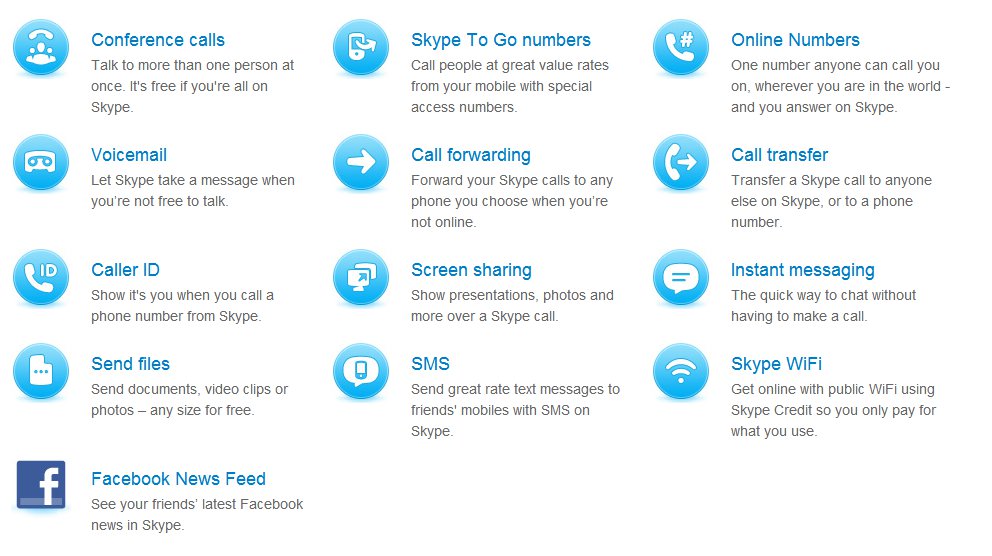Mike Schertenlieb
In an office environment, where everyone’s connected to the internet and working on a computer, instant messaging programs make a lot of sense. They provide a way to communicate quickly with coworkers (or clients), and also meet some convenience requirements conducive to office-type work – especially for us!
For one, typing to one another via a chat is silent. There may be times when we need to speak to each other in person or talk with clients on the phone, but for the most part, a few short messages get the job done – and more importantly, don’t interrupt the people on the phone with our clients or their customers.
It’s also an excellent tool for sharing links and sending files instantly. You can’t really tell your coworker some long URL verbally, or expect them to type it out letter by letter. With an instant message, clicking links, copy/pasting task instructions, sharing screenshots… All of it is super easy!
All of this is true for communicating with clients too – if it’s convenient for them, of course. It’s just an easy way to share information when we’re all already sitting at the computer anyway.
…Now the real question, what’s the best choice?
There are plenty of options, from IM functionality built into project management software, the collaborate functions of Microsoft Office365, Google Hangouts… And on and on… But the two major players (at least around our office) are Skype and Slack. Let the showdown begin.
Skype Pros and Cons
Pros
Skype was THE standard in easy-to-use VOIP phone and instant messaging for a long, long time. We used it for years! It’s got capability for instant messaging, domestic and international phone calls, file transfers, group calls, video calls (direct and group), SMS, voicemail, screen sharing… As you can see, Skype is no slouch.

There are all of the robust features you would expect from a program of this type, and it works like a charm – especially for video calls. For many people, it’s a great alternative to a cell phone, an easy way to make international calls, and a great way to keep a wide range of contacts organized and within easy reach.
So what’s the problem?
Cons
Well, for us, the problems came twofold. The first isn’t Skype’s fault, it’s ours – it’s people’s – for being fallible and making mistakes. Since Skype is just based on your own individual account, and all the people you’re chatting with are on their individual account, there isn’t much separation between, say, client and coworker.
This means that it’s just a little too easy to click the wrong chat and send a link to a client instead of a coworker, to mention another client’s name, or anything else of that nature. We need to be sure we maintain the trust of our clients, and even if it never ACTUALLY led to problems, we had to recognize the risk for what it was. It’s also a little too easy to call people by an accidental brush of a button.
The real problem, though, was the strain we were putting on the program – and how bad it made our machines bog down. For an individual use (or small office settings), it may be just fine – but we’re an office of 25+ people, with an office-wide group chat, smaller project-oriented group chats, individual messages, messages with clients, group messages with clients’ teams…
The result is tens of thousands of messages, daily file transfers, and so on… One of Skype’s best features – that it stores your message archives indefinitely – actually became a downfall for us. It was simply too much data, and just firing up Skype on some of our machines meant a HUGE loss in processing power for everything else we need to do.
After a long time with the tried and true Skype method of communication, we had to make a change…
Slack Pros and Cons
Pros
Full disclosure: I love Slack. It’s great. It’s one of my favorite applications ever – so I might be a tiny bit biased here.
That said, it is jam packed with great features: group chats, one to one messaging, an amazing reminder feature (courtesy of Slackbot), customizable shortcuts, file transfers, web snippets, multiple teams, and a bevy of various add-ons and customizable options.

One of the best features for our use here at LongerDays is the organization of different “teams.” Unlike Skype, there isn’t really individual registration or the ability to connect with anyone as long as you have their Skype name or number… Instead, users have to be in teams – usually organized by the domain of an email address (but not necessarily) – and can can only message the people within that team. The Slack desktop application allows you to be in multiple teams, but it’s organized wonderfully – so each team’s individual and group chats are organized in a list, with an additional menu of all your “teams” in the sidebar.

This solves precisely the risk we ran with Skype. When I message my coworkers or post in a group chat, I have to be in the LongerDays team. To message a client, I need to intentionally select that team, then the appropriate message thread. Just this little step is some extra insurance that internal information stays internal, and client information stays only with the approved members of that client’s team.
There’s also a certain level of charm to be found with Slack. You can keep it pretty cut and dry, or make a little more lively with Giphy integration, ask Slack to roll a d20 for you, set up automated responses or images for certain keywords, and so on. The level of customization isn’t just useful – it’s fun! But it can’t all be good, right?
Cons
Because we’re looking specifically at Skype vs. Slack, there’s one HUGE difference: Slack doesn’t make phone calls. For many, that’s a deal breaker. Even in our office, some of us still run Skype because our clients prefer it, because we need it for calls, etc., and for still plenty of other users, all of this team-based, customizable mumbo-jumbo is just way too much.
They need phone calls and straightforward messaging – exactly what Skype excels in providing.
Also related to our LongerDays Skype woes, the free version of Slack doesn’t keep archives of messages past 10,000 – and while that means it doesn’t get bogged down with massive amounts of message storage, it also means that digging for some important bit of overlooked data or a conversation from months back is all but impossible. So far though, this has been little more than a very, very minor drawback.
Now the real doozie – and this isn’t really Slack’s fault, it’s the user’s…
Every piece of technology can be misused, to a certain degree, and Slack – especially in the workplace – is no exception. All of those bells and whistles – the Giphy integration, the reminders, the automated images, the subchats, the customizable bits and baubles… It can be a potential distraction from the task at hand.
Even the best workers, in industries of all kinds, have lulls in their focus – and these “fun” extras certainly don’t help. Less diligent office workers might struggle to stay on track.

It’s just a little too easy to get wrapped up in a conversation, devolve into sending memes and rolling the dice with Giphy, and forget that you’re supposed to be working…
Fortunately, we haven’t had too much trouble with this, but it’s shown us the potential ugly side of such a fun program – and we’ve definitely acknowledged the concentration/productivity risks it raises.
Like anything else, it requires some personal responsibility to not get caught up in distraction – but hey, that’s true of pretty much the entire internet, of being online doing anything.
Ultimately, Skype and Slack are extremely different applications that happen to have some crossover in the instant messaging department. Which you should choose (if you even choose one of them) will depend on your individual needs, or the needs of your organization. For us, Slack has been the clear winner – if nothing else because for our needs, it functions so much better!
They’re both free, with some options to upgrade for more Slack options, purchase credits for Skype calls, and so on – but either is easy enough to download and try out at no cost. Give them a go, and let us know which option works best for your team!
Want to learn more?
[su_button url=”https://longerdays.com/2018/01/01/take-a-tour-of-our-features/” target=”blank” style=”flat” background=”#2F6690″ size=”10″ center=”yes” radius=”6″]Take a tour of our features![/su_button]